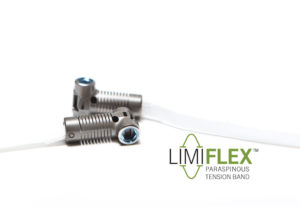
Empirical Spine has announced the closing of a US$10 million Series B financing round, the funds of which will be used to advance its LimiFlex Paraspinous Tension Band on its path to market in the USA.
This includes completing an ongoing pivotal trial and submitting all components of the premarket approval (PMA) filing to the US Food and Drug Administration (FDA). The device received CE mark in 2009.
The funding round was led by Scientific Health Development, with additional investment from GP&G (Green Park & Golf) and other syndicate members.
Richard Treadwell, Empirical Spine CEO, said: “We are gratified by the confidence investors are showing in the LimiFlex device.
“As study data accumulates, we have more and more evidence that LimiFlex is on track to meet or exceed the clinical results we hoped for. The new funds will enable us to develop and submit a very strong PMA filing in the coming months.”
Traditional means of stabilising the spine after decompression surgery involve lengthy, invasive procedures that use bone graft material, combined with instrumentation such as pedicle screws and rods, to fuse two or more vertebrae together. The LimiFlex device was developed to offer a minimally invasive way to stabilise the spine yet preserve motion. The device aims to restore the spine’s natural biomechanics, with respect to parameters such as stiffness, lordosis, and facet engagement, according to Empirical Spine.
The LimiFlex IDE trial is a prospective, multi-centre, controlled clinical trial studying the safety and efficacy of the LimiFlex Paraspinous Tension Band compared to transforaminal lumbar interbody fusion (TLIF) in patients suffering from degenerative spondylolisthesis and lumbar spinal stenosis. The study primary endpoint is a comparison of success of a composite endpoint, including improvement in pain and function and absence of adverse sequelae, at 24 months. The objective of the study is to demonstrate that patients can achieve the benefits of spinal stabilisation, without the complications related to fusion of vertebrae.
Reginald Davis of the BioSpine Institute added: “Results from the LimiFlex trial suggest the LimiFlex device may offer a motion-preserving, minimally invasive treatment option suitable for use in outpatient settings, such as the ambulatory surgery centre. In my practice, I have seen increased interest in these benefits from both patients and physicians.”












